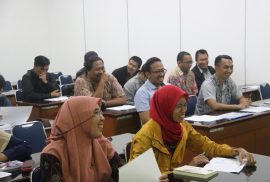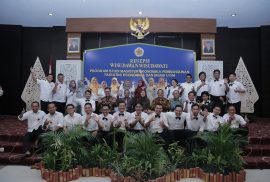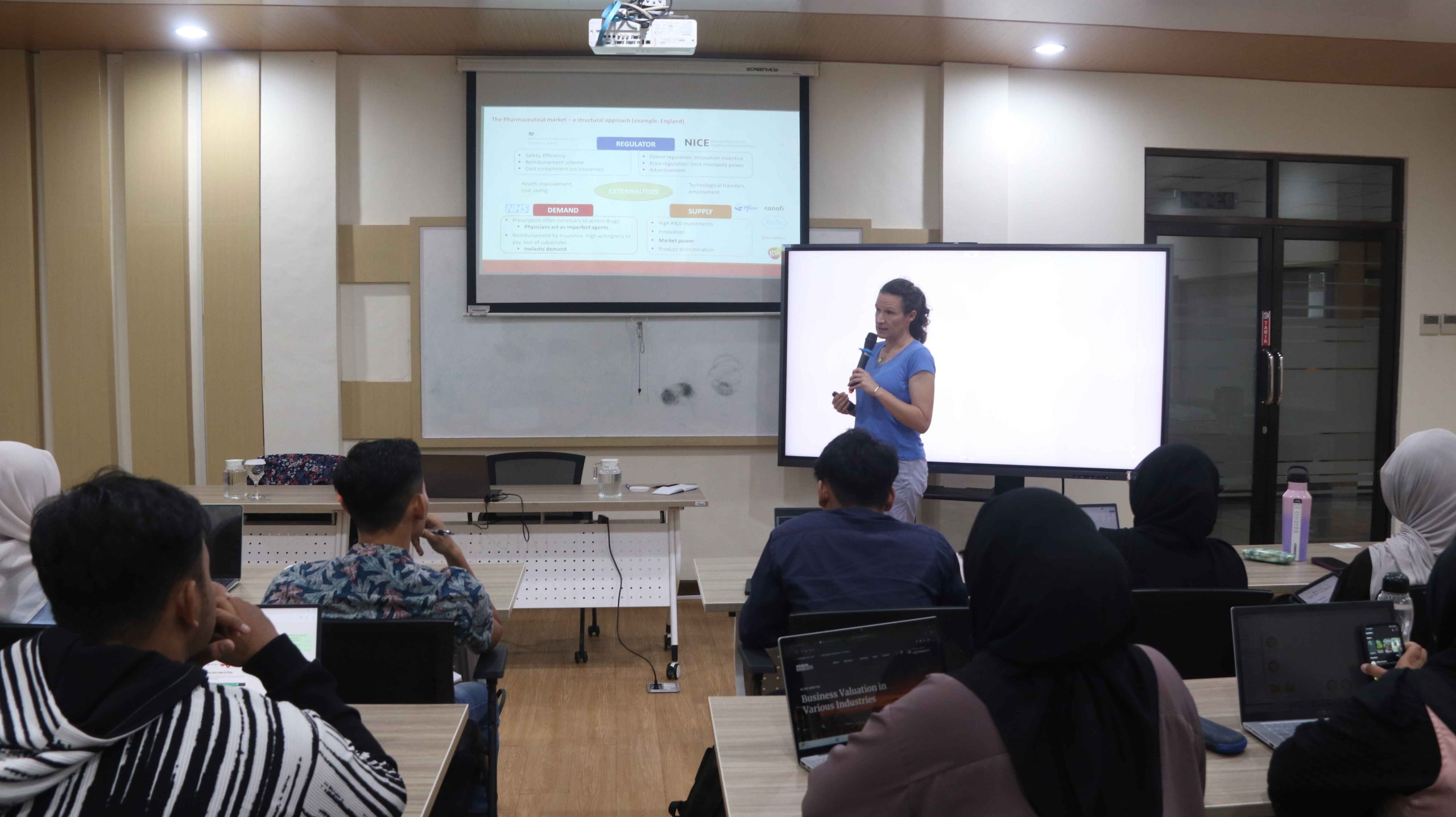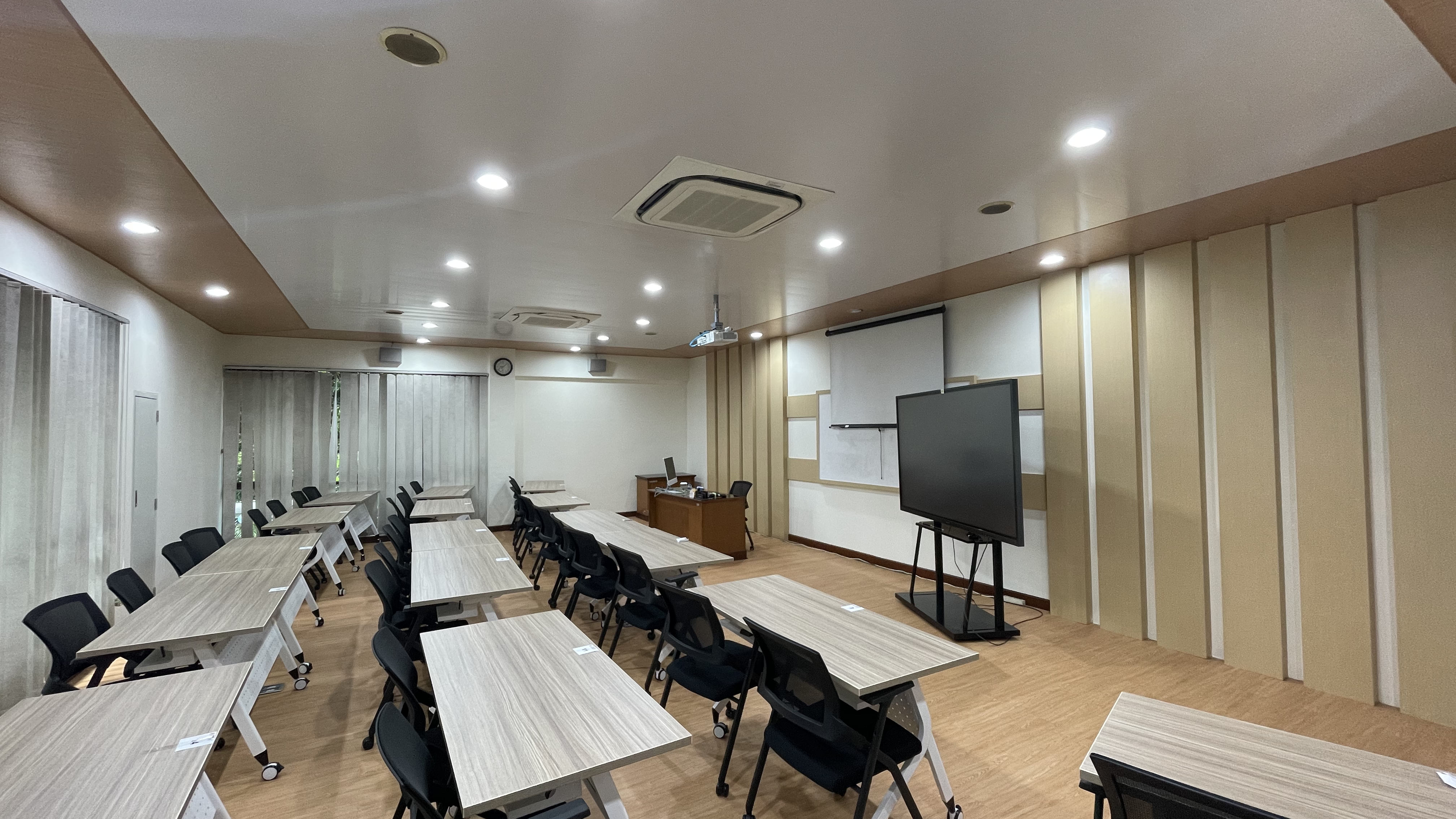
SLEMAN – The Graduate School of Development Economics FEB UGM conducted the general lecture on the topic of Manpower Statistics in Indonesia at the Mubyarto Auditorium MEP FEB UGM on Tuesday (12/09) followed by the students from Statistics Central Bureau (BPS) class and Linkage Program of National Development Planning Agency (Bappenas) class. Drs. Razali Ritonga M.A., the speaker of this general lecture who is also posted as the Head of BPS Education and Training Center described the concept of manpower, how the manpower phenomenon occurred in Indonesia based on the BPS’ data and its future challenges.
Razali mentioned that working population in Indonesia on February 2017 were 124,54 million people, 6,13 million people increase compared to the situation on August 2016 and 3,89 million people increase compared to the situation on February 2016. In the other side, the labor force on February 2017 were 131,55 million people, 6,11 million people increase compared to August 2016 and 3,88 million people increase compared to February 2016. This is in line with the Labor Force Participation Rate (TPAK) recorded an increase of 69,02 % on February 2017, he said. However, if it is considered by the gender, there is a difference in TPAK between men for 83,05 percent and women for 55,04 percent, it indicates the potential lost.
General Unemployment Rate (TPT) February 2017 were 5,33 %, experienced to decrease of 0,28% compared to August 2016 and 0,17% decrease compared to February 2016. The decreased was impact from several governments’ policies related to the job creation that apparently it was quite successful reducing unemployment rate, it was indicated by the percentage that moving fall. Bali is a province in Indonesia that experiences of employment scarcity, the TPT is less than 2,5% said Razali Ritonga. This value could be meant that unemployment are only to the ill or disable people in the area and this needs to be particular concern from the government, he added.
General Unemployment Rate (TPT) based on final highest education level is Vocational High School. In fact, the Vocational High School is prepared to be ready to go in the job market. It might be because the company prefers to recruit high school graduates than vocational high school and is considered that high school is smarter than vocational high school. The company would like to form a person not well formed person as vocational high school has prepared for. Thus, the allocation of vocational high school graduates needs to be concerned, that possibly the vocational graduates are needed in the area where they are lack of vocational high school while for the area where there is plenty vocational high school, their graduates are less needed.
On February 2017, 58,35% population worked on informal activities, and the percentage of informal employers increased 0,07% point compared to February 2016. During the latest years, the sectors which had increasing in the working population were Public Service (0,42 %), Transportation, Warehouse, and Communication (0,27 %), Agricultural (0,12 %); and Industry (0,07 %). The other sectors which experienced to decrease were Construction (0, 64%) and Trading (0,25%). On February 2017, there were 30, 14 % of part time workers (the working hours are less than 35 hours per week) including 7, 62 percent half unemployed and 22, 52% part time workers. In the latest years, half employed downed for 1,05%, while part time workers raised for 1,08 %. The averages wage of labor/employer/officer per month on February 2017 were 2,70 million rupiah, the highest were electricity, gas and water sectors for 4,43 million rupiah, and the lowest was agricultural sector for 1,75 million rupiah. If it is compared based on the gender, the averages wage of men labor/employer/officer per month is higher compared to women that are 2,95 million rupiah and 2,27 million rupiah.
The future challenge should be faced by Indonesia will be the changes of population structure into one of engine of growth. The change of population structure has encouraged higher consumption that contributes to the growth. The policies which can be applied to face the challenge are the policy for short term and long term period. The short term period is by utilizing the increase of total population in the productive age through the increasing production and consumption while the long term is by utilizing the accumulation asset that could be productive investment. In which, the main requirement is productivity increase and investment climate and reliable financial institution.
The main investment needed in utilizing the demography bonus are human resource investment in which it could be done by increasing national health security and nutrition improvement, widening universal middle education, improving access and quality of higher education and the productivity of labor force and elderly. Secondly is by supporting capital investment. It is done by developing products of saving, deposit, stocks and other long term investment, politic and economy stability, banking system and reliable investment, as well as sustainable retirement system. Then, the regulation is used as solution to reduce employment without any effort to increase infrastructure and investment. The regulation meant is prohibition in taking double work, child labor, and should encourage more elderly welfare said Razali Ritonga at the end of his presentation.












